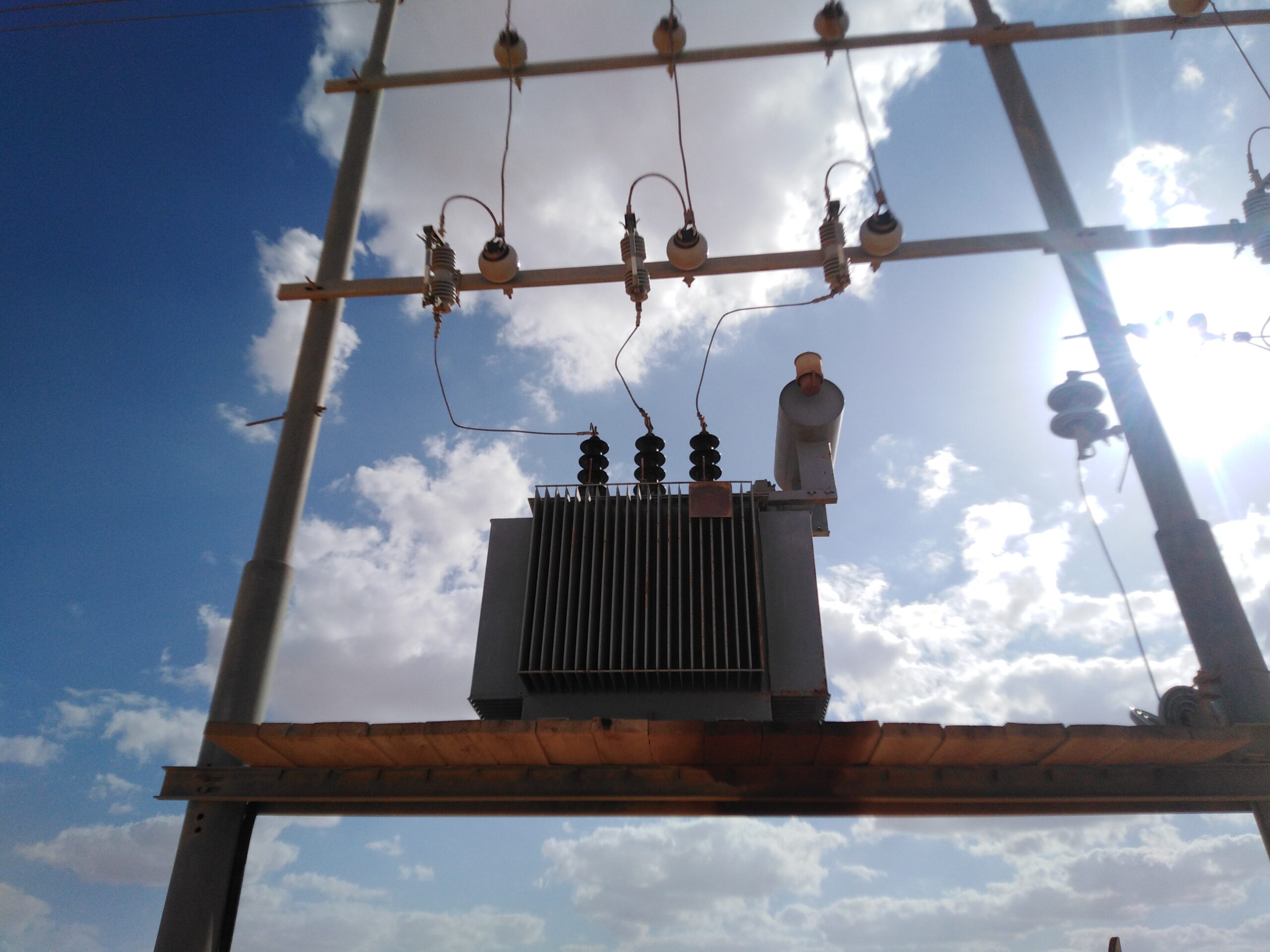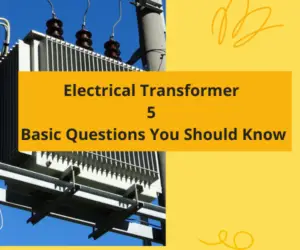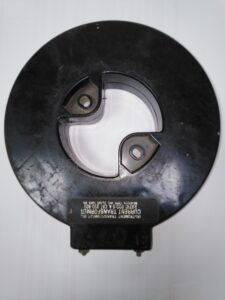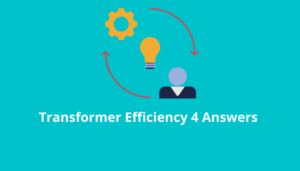Table of Contents
Step Up Transformer
A Step-Up Transformer is an electrical device that increases the voltage from the primary side (input) to the secondary side (output) while proportionally decreasing the current. It operates on the principle of electromagnetic induction and is a key component in power transmission systems.
Key Features:
-
Voltage Increase:
- The output voltage (secondary) is higher than the input voltage (primary).
- The voltage increase is determined by the turns ratio of the transformer: Vs/Vp = Ns/Np
Where Vs and Vp are the secondary and primary voltages, and Ns and Np are the number of turns in the secondary and primary coils, respectively.
-
Current Decrease:
- As voltage increases, the current decreases to maintain constant power (ignoring losses), per the formula: P=V×I
- As voltage increases, the current decreases to maintain constant power (ignoring losses), per the formula: P=V×I
-
Core and Coils:
- Made of laminated soft iron to reduce energy losses due to eddy currents.
- The primary coil has fewer turns, while the secondary coil has more turns.
Applications:
-
Power Transmission:
- Used in power stations to step up voltage for long-distance transmission. High voltage minimizes energy losses due to resistance in transmission lines.
-
Medical Equipment:
- Commonly used in X-ray machines and other devices requiring high voltage.
-
Industrial Applications:
- Used in processes like arc welding and electroplating.
-
Renewable Energy:
- Integrated into systems like wind turbines to raise the voltage for grid compatibility.
I have written a detailed article about Overhead Transmission Lines, You can find it here for more information.
Advantages:
- Efficient power transfer over long distances.
- Reduces power losses in transmission lines.
How Does A Step-Up Transformer Increase Voltage?
A step-up transformer increases voltage through the principle of electromagnetic induction.
When an alternating current (AC) flows through the primary coil of a transformer, it creates a changing magnetic field. This magnetic field then induces a voltage in the secondary coil.
The key to changing voltage levels lies in the number of turns in each coil.
- Step-up Transformer: The secondary coil has more turns than the primary coil. This means the induced voltage in the secondary coil will be higher, based on the ratio of turns between the coils.
This process works because of Faraday’s Law of Electromagnetic Induction, which says that a changing magnetic field in a loop of wire produces a voltage (or electromotive force). The induced voltage depends on:
- The rate of change of the magnetic field.
- The number of turns in the coil.
- The frequency of the AC.
In simple terms, a step-up transformer uses electromagnetic induction and the difference in coil turns to boost the voltage of the AC passing through it.
Does Step-Up Transformer Increase The Power?
A step-up transformer does not increase the power of the electrical system. Instead, it increases the voltage while decreasing the current, ensuring that the overall power remains constant, apart from minor losses due to inefficiencies.
Power in an Electrical System: Power is determined by both voltage and current. When a step-up transformer raises the voltage, the current is reduced proportionally to maintain constant power output, as per the formula:
Power (P)=Voltage (V)×Current (I)
Conservation of Energy: According to this principle, the power input to a transformer equals the power output, minus small losses caused by heat and other inefficiencies.
In summary, while a step-up transformer increases voltage, it decreases current in equal proportion, ensuring the total power stays the same.
For a three-phase transformer, the current equation is I = S / (√3 V)
For example, if we have a 3-phase step-up transformer of 160 KVA Power, the primary voltage is 400V, and The secondary voltage is 11KV.
This step up transformer primary current will be Iprimary = S / (√3 Vprimary ) = 160*1000 / (√3 *400) = 230A
Secondary current will be Isecondary = S / (√3 Vsecondary ) = 160*1000 / (√3 *11000) = 8.39A
Transformers do not increase power; they only convert it. The power on the primary side of a transformer is essentially the same as the power on the secondary side, minus small losses due to inefficiencies. This is a direct application of the law of energy conservation, which states that energy cannot be created or destroyed, only converted from one form to another.
The transformer works by transferring electrical energy between the primary and secondary coils through electromagnetic induction. While it can increase or decrease voltage, it does so by inversely adjusting the current, ensuring that the total power remains constant.
In conclusion, transformers are constant-power devices that maintain the same power level on both sides while converting voltage and current according to the specific application.
Step Down Transformers
A step-down transformer is a type of electrical transformer that decreases the voltage of an alternating current (AC).
It also has two or more coils of insulated wire wound around a core, similar to a step-up transformer. However, in a step-down transformer, the primary coil has more windings than the secondary coil.
When an AC current flows through the primary coil, it creates a magnetic field, which induces a lower voltage in the secondary coil due to the relative difference in the number of windings. This process leads to a decrease in voltage and an increase in current, based on the principle of electromagnetic induction.
Step-down transformers are commonly used in various applications, including power distribution systems, household appliances, electronic devices, and industrial machinery. They help reduce the voltage to a level suitable for the safe operation of electrical equipment or for efficient power transmission over shorter distances.
In household applications, step-down transformers are often used to convert high-voltage electricity from the power grid to the lower voltages required for household appliances and electronics. This enables safe and efficient use of various devices without risking damage due to high voltage.
Applications Of Step-Down Transformers
Step-down transformers find a wide array of applications across various sectors due to their ability to reduce the voltage of an electrical system. Some common applications include:
-
Household appliances: Step-down transformers are used in households to supply the appropriate voltage for various devices such as televisions, laptops, chargers, and other electronic appliances. They help in reducing the high voltage from the main power supply to levels suitable for safe and efficient use in homes.
-
Industrial machinery: Many industrial machines and equipment require lower voltages for their operation. Step-down transformers are used to adapt the voltage from the power supply to the specific voltage requirements of industrial machinery, ensuring their safe and efficient functioning.
-
Electronic devices: Step-down transformers are often used in the power supply units of electronic devices such as computers, audio systems, and other consumer electronics. They help regulate the voltage to levels appropriate for the sensitive electronic components, ensuring their stable and safe operation.
-
Power distribution networks: Step-down transformers are an essential part of the power distribution infrastructure. They are used to reduce the high-voltage electricity generated at power plants to lower voltages suitable for local distribution. This helps in minimizing power losses and ensuring safe and efficient transmission of electricity to residential and commercial areas.
-
Voltage regulation: In various electrical systems, step-down transformers are used for voltage regulation and stabilization. They help in maintaining a steady and consistent voltage level, preventing fluctuations that could potentially damage equipment or disrupt the functioning of electrical systems.
-
Isolation and safety: Step-down transformers are also used for providing isolation and safety in electrical circuits. They help isolate sensitive equipment from the main power supply, preventing electrical shocks, and protecting devices from potential power surges and fluctuations.
Can We Use a Step Down Transformer as a Step Up Transformer?
Using a step-down transformer for stepping up voltage is not recommended, as it can lead to significant issues and hazards. Here’s why:
1. Inefficiency
- Step-down transformers are optimized for a specific voltage range.
- Reversing their function can cause energy losses, heat generation, and potential damage due to inefficiencies.
2. Safety Concerns
- Operating a transformer outside its designed voltage range can result in:
- Overheating.
- Insulation breakdown.
- Electrical hazards like shocks, short circuits, or even fires.
3. Incompatibility
- The winding ratios and insulation in step-down transformers are not designed to handle the higher voltages of a step-up process.
- This mismatch can lead to premature failure or permanent damage to the transformer.
4. Regulatory Compliance
- Using a transformer against its design violates electrical safety standards and regulations, potentially causing legal issues.
Example: A 300 kVA Transformer
- Low Voltage Side: 400V, designed for 433A.
- High Voltage Side: 11,000V, designed for 15A.
Current Calculations
- Low Voltage Side Current: I=S/(1.73×V) = 300,000/(1.73×400) = 433A
- High Voltage Side Current: I=S/(1.73×V) = 300,000/(1.73×11,000) = 15A
What Happens if Used in Reverse?
- Insulation Damage:
- Connecting the high-voltage side (11,000V) to the low-voltage side (400V) risks burning out the winding insulation due to excessive voltage.
- Excessive Current:
- The current on the high-voltage side would increase dramatically from 15A to 433A, jeopardizing the winding’s structural integrity.
Conclusion
Transformers are designed for specific purposes—either stepping up or stepping down voltage. Using them in reverse can result in severe damage and safety hazards.
If you require a transformer capable of working bidirectionally, consult the manufacturer for suitable options. Using a unidirectional transformer in reverse is both unsafe and impractical.
How Do You Identify If A Transformer Is A Step Up Or A Step-Down?

You can identify whether a transformer is a step-up or a step-down transformer by examining the voltage levels and the winding turns on the primary and secondary sides. Here’s how:
Compare the Voltages
- Measure the input voltage (primary side) and the output voltage (secondary side).
- Step-Up Transformer: The output voltage (secondary) is higher than the input voltage (primary).
- Step-Down Transformer: The output voltage (secondary) is lower than the input voltage (primary).
Check the Winding Turns
- Count or refer to the specifications for the number of winding turns in the primary and secondary coils.
- Step-Up Transformer: The secondary coil has more turns than the primary coil.
- Step-Down Transformer: The secondary coil has fewer turns than the primary coil.
Look at the Transformer’s Label or Rating Plate
Most transformers have a label that provides important details such as the input and output voltage ratings.
- For example:
- Primary Voltage: 110V, Secondary Voltage: 220V → Step-Up Transformer.
- Primary Voltage: 220V, Secondary Voltage: 110V → Step-Down Transformer.
Function in the Circuit
- Observe how the transformer is being used in the system:
- If it’s supplying power to high-voltage equipment, it’s likely a step-up transformer.
- If it’s reducing voltage for low-voltage devices, it’s a step-down transformer.
Summary
You can identify a step-up or step-down transformer by checking the voltage levels, winding turns ratio, and label information. A step-up transformer increases voltage, while a step-down transformer reduces it.
What Type of Transformer Is Used in Substations: Step-Up or Step-Down?
In a substation, both step-up and step-down transformers are used, depending on the substation’s purpose within the power distribution network.
Step-Up Transformer
- Purpose: These transformers are used in generating stations or substations near power plants to increase the voltage of electricity before transmitting it over long distances.
- Why Step Up?
- Higher voltage reduces current for the same amount of power, minimizing energy losses in transmission lines.
Step-Down Transformer
- Purpose: These transformers are used in substations closer to end users (such as cities, factories, or residential areas) to lower the voltage to safer levels for local distribution.
- Why Step Down?
- Electricity is distributed at lower voltages to ensure safety and compatibility with consumer appliances.
Example: Power Distribution
- Generating Station: A step-up transformer increases voltage (e.g., from 11 kV to 400 kV) for efficient transmission.
- Transmission Substations: Step-down transformers lower voltage in stages (e.g., from 400 kV to 132 kV).
- Distribution Substations: Final step-down transformers reduce voltage further (e.g., from 33 kV to 11 kV or 400 V) for end users.
Summary
- Step-Up Transformers: Found in generating substations to increase voltage for long-distance transmission.
- Step-Down Transformers: Found in distribution substations to lower voltage for safe local use.
Don’t Leave Empty-Handed!
Install my Free Android App on Google Play:
Electrical Cables Most Common Tables “Cables Tables”
And, my Electrical Calculations App “Fast Electrical Calculator”
Discover more great content by subscribing to My channel
Looking to stay ahead of the game in the world of electrical engineering? Subscribe to my YouTube channel and gain access to exclusive content you won’t find anywhere else!
The staff I recommend
(Amazon Affiliate Links to products I believe are high quality):
- Economy 120 Volt/60Hz AC Power Source – Step-Down Voltage & Frequency Converters 1800W
- UNI-T Digital Multimeter Tester UT139C
- 50-Amp Extension Cord for RV “100ft”
- Voltage Stabilizer 110/220v
- Hair Dryer “best selling“
- TOSHIBA EM131A5C-BS Countertop Microwave Ovens
Disclaimer: This contains affiliate links to Amazon products. I may earn a commission for purchases made through these links.



